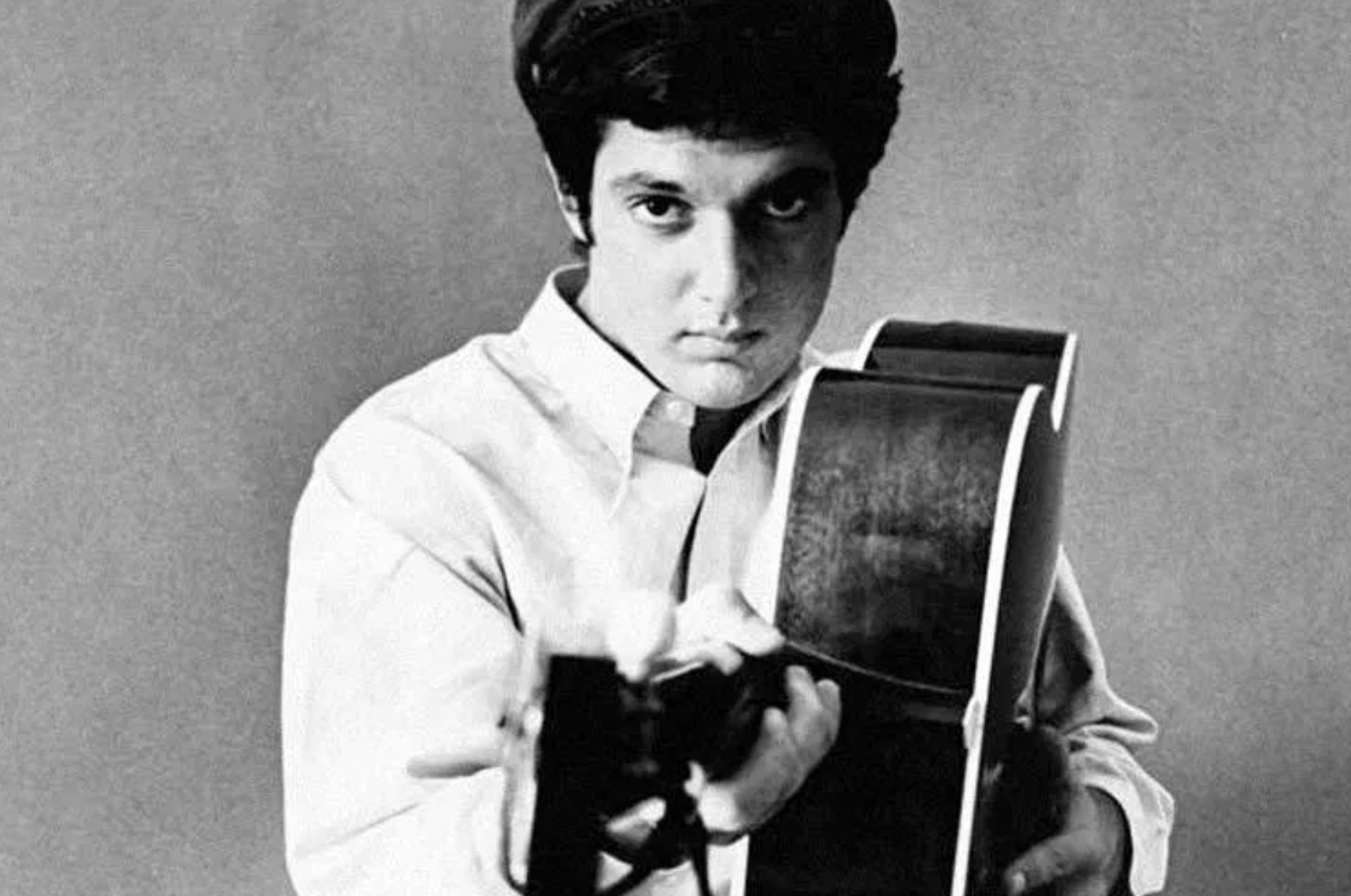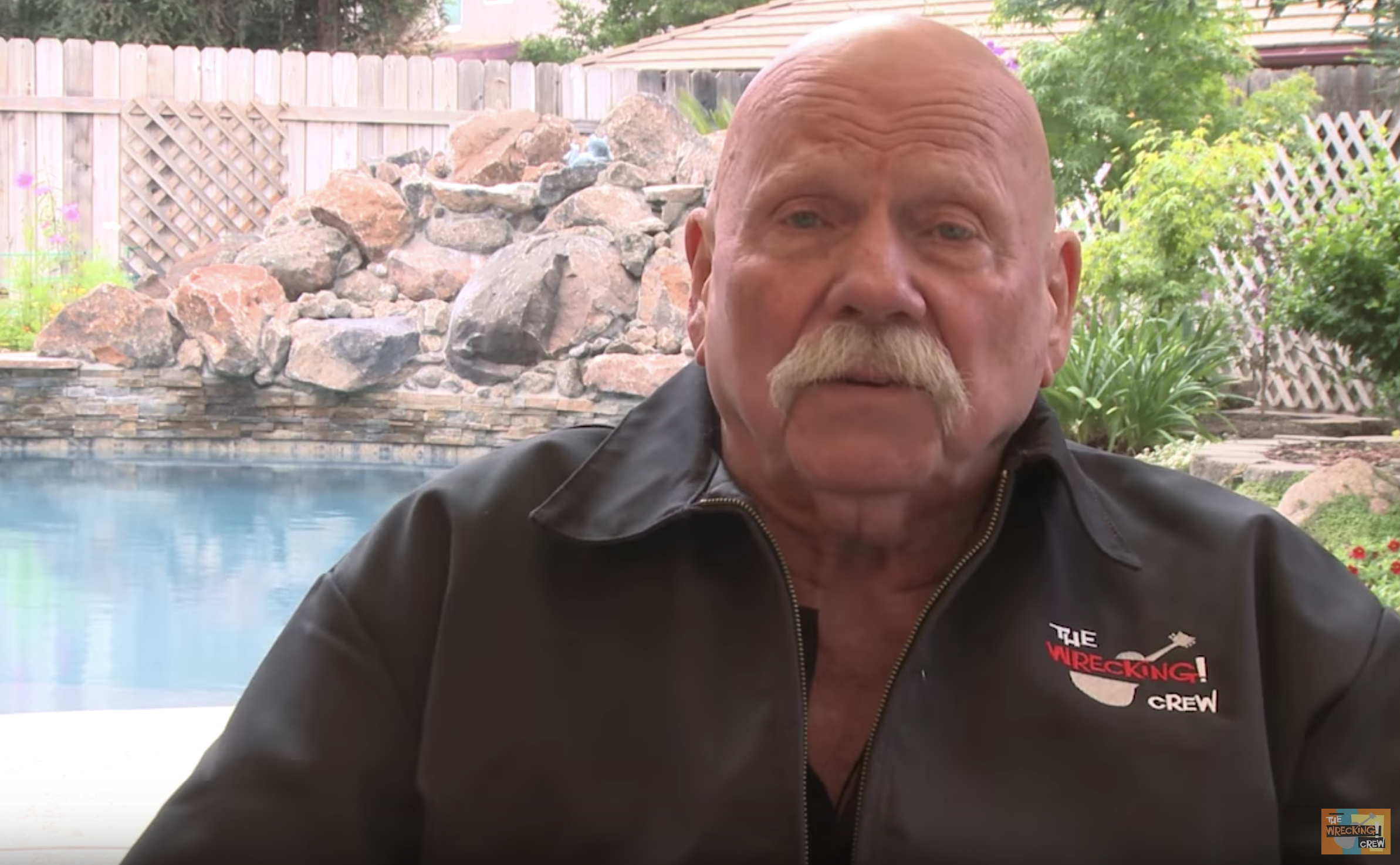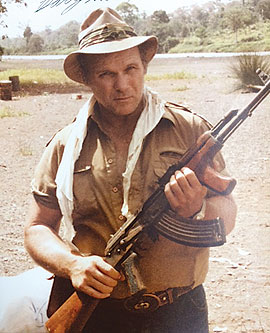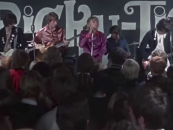Barry McGuire vs. Barry Sadler: When the News Hit #1
by Jeff TamarkinCountless songs—slotting into nearly every genre—have been written about current events, but only rarely have they found their way to the top of the pop charts. In 1965 and early 1966 two songs did, and their sentiments could not have been more different.
The first, “Eve of Destruction,” written by P.F. Sloan and sung by Barry McGuire, check-listed a litany of complaints about the inequities and horrors of the day, from race riots to potential nuclear war, and suggested that doom was imminent. The second, “Ballad of the Green Berets,” was a patriotic paean to the U.S. Army’s elite special forces, written and recorded by Staff Sergeant Barry Sadler, himself a combat-wounded Green Beret medic.
Between them, the two songs—and the fact that each shot to the top of the charts—outlined the disparity that was quickly unfolding among the American populace at the time.
“Eve of Destruction” had been written in 1964 by Sloan, a songwriter who would later go on to compose successful hits recorded by the Turtles, the Searchers, Herman’s Hermits, the Grass Roots. Johnny Rivers and others. Just 19 at the time, Sloan wrote “Eve of Destruction” initially as a poem stating what he considered to be some of the ills of the time. The line “Think of all the hate there is in Red China, then take a look around to Selma, Alabama” compared the perceived threat the Communist nation supposedly posed to the West and the racism rampant within our own Southern states, while “You’re old enough to kill but not for voting” was a commentary on the fact that 18-year-olds at that time were not able to cast a vote but could be drafted into the Armed Forces.
Sloan had already established a writing partnership with Steve Barri and the pair had been signed to Screen Gems, the largest music publishing company on the West Coast. Screen Gems executive Lou Adler then hired them away for his own new company, Trousdale Music, but Sloan took sole credit for his new topical composition. The Byrds, just breaking out in 1965, were offered “Eve of Destruction” but turned it down. The Turtles cut it for their debut album, It Ain’t Me Babe, but it was Barry McGuire, a singer born in Oklahoma on Oct. 15, 1935, who had just left his position as a member of the New Christy Minstrels folk troupe, whose version contained all of the elements needed to make the song a hit. Backed by the legendary Wrecking Crew team of studio musicians, McGuire, in a gravelly voice that conveyed the anger the lyrics required, cut Sloan’s song, although he reportedly didn’t like it all that much. (Sloan once claimed that McGuire rushed through the song in the studio, reciting the lyrics from a crumpled piece of paper.)
Adler released “Eve of Destruction” as the B-side of “What Exactly’s the Matter With Me,” another Sloan composition, on Dunhill Records, the label Adler had recently set up (and would soon hit major gold with the Mamas and the Papas). As the story goes, a disc jockey in the Midwest accidentally played the wrong side of the single and the phones lit up with requests: “Eve of Destruction” took off instantaneously, entering the Billboard Hot 100 at #58 on the August 21, 1965, chart. A month later, on September 18, it displaced the Beatles’ “Help” at the top.
Related: What were the big radio hits in the summer of 1965?
It did not get there without controversy. Many radio stations refused to play it, citing the incendiary lyrics. Sloan once recalled that one radio programmer claimed the song would frighten children. “Any positive press on me or Barry was considered un-patriotic,” Sloan said in 1999. “A great deal of madness, as I remember it! I told the press it was a love song. A love song to and for humanity, that’s all. It ruined Barry’s career as an artist and in a year I would be driven out of the music business too.”
But “Eve of Destruction” proved an unstoppable force. Why did the song take off the way it did? Sloan addressed that in the same copyrighted piece: “It released some major concerns for myself and maybe because it was coming from a genuine concern for the well-being of America and the world,” he wrote. “I remember in 1965 the civil rights movement had begun, Vietnam was in the background, the cold war had heated up so drastically that we’re just finding out today how close the world came to the brink of a nuclear war. This was in the air, fear and hypocrisy…the unthinkable could be happening.”
Watch Barry McGuire and “Eve of Destruction”
Sloan, who died in 2015, was correct that Barry McGuire never had another hit. His next single, “Child of Our Times,” peaked at #72. He became a born-again Christian in 1971 and recorded religious-themed music, basically disavowing “Eve of Destruction” until many years later when he would sing an updated version.
“Eve…” also unleashed opposition in the form of an “answer song,” titled “The Dawn of Correction,” attributed to the Spokesmen and written by the group’s members: John Medora, David White and Ray Gilmore (the first two had co-written Danny and the Juniors’ “At the Hop” and Lesley Gore’s “You Don’t Own Me”). “Dawn of Correction” attempted to put a Band-Aid on the current situation, to assure listeners that it wasn’t all that bad and the world wasn’t about to end, but not as many wanted to hear the alternative scenario: their tune, issued on the Decca label, stalled at #36.
Watch the Spokesmen sing their answer song, “Dawn of Correction”
But the real answer to McGuire’s raging protest tune came from another Barry—Barry Sadler, as unlikely a pop star as the charts have ever seen. Born Nov. 1, 1940, in Carlsbad, N.M., Sadler was a child of divorce whose father died at a young age. Sadler dropped out of high school and, in 1958, at 17, he enlisted in the U.S. Air Force. Discharged in 1961 after serving in Japan, he re-enlisted, this time trying out the Army. He volunteered for the Special Forces and trained to be a medic, but was wounded in action while serving in Vietnam in 1965.
A singer and guitar player, Sadler took the opportunity of his recovery time to write a song praising the patriotism of the Green Berets, basing his lyrics on a story written by Robin Moore as a just-published novel. Moore, in fact, assisted Sadler in crafting the lyrics and helped the soldier secure a recording deal with RCA Records. Set to a martial beat, “Ballad of the Green Berets” told the tale of the “Fighting soldiers from the sky, fearless men who jump and die, men who mean just what they say, the brave men of the Green Beret.”
As the song unfolds, we learn that only a small percentage of those who try out for the Green Beret designation will succeed in becoming “America’s best.” Those select few will be trained to “live off nature’s land” and “fight by night and day.”
And yes, some will not return home:
“Back at home a young wife waits
Her Green Beret has met his fate
He has died for those oppressed
Leaving her his last request
Put silver wings on my son’s chest
Make him one of America’s best
He’ll be a man they’ll test one day
Have him win the Green Beret.”
Recorded in New York in December 1965, with a B-side called “Letter From Vietnam,” Staff Sgt. Sadler’s single, like McGuire’s anthem, struck a chord immediately with a large segment of the record-buying public, entering the Billboard chart at #87 on Feb. 5, 1966. Exactly one month later, it was #1, where it remained for a total of five weeks—four weeks longer than “Eve of Destruction” had remained at the top.
For the most part, despite the controversies and differing sentiments, both songs received airplay on the same radio stations, whose philosophies could usually be summed up by “If it’s a hit, we’ll play it.”
But Barry Sadler—whose brief fling with pop stardom included an appearance on The Ed Sullivan Show—also discovered quickly that a smash hit did not equal longevity: his followup, “The ‘A’ Team,” similar in its focus, made it to #28 but Sadler would never again appear on the record charts.
“Ballad of the Green Berets” later appeared in a choral rendition in the John Wayne film vehicle of Moore’s story, and the tune has figured in everything from the cult film Caddyshack to The Simpsons. A Swedish version praising that country’s forces was a hit in that country and the Liverpool Football Club also uses an adaptation. Other versions have made their way into the public consciousness in several other nations, mostly in Europe.
Barry Sadler, who wrote an autobiography in 1967, didn’t live long enough to take pride in his song’s extended life. His later life was marked by troubling incidents: Leaving the Army in 1967, he was broke by 1973, and five years later he shot and killed a little known country singer. Sadler’s lawyer arranged a plea bargain deal and Sadler spent only a month in the county workhouse.
Beginning in 1977, Sadler wrote some 29 pulp fiction novels, but the lure of action grabbed him again and in 1980 he moved to Guatemala, where he reportedly trained members of the Contras guerrilla group. He passed away on Nov. 5, 1989, at the age of 49, a year after being shot in the head in that country. Some say he was attacked by a robber; others claimed he accidentally did it to himself.
[A book, Ballad of the Green Beret: The Life and Wars of Staff Sergeant Barry Sadler, by Marc Leepson, was published in 2017. It’s available here.]











2 Comments so far
Jump into a conversationGreat background stories on Barry McGuire &
SSGT Barry Sadler, but his interview on Jimmy
Dean Show was a special treat! For a special
treat from Jimmy Dean, please take a listen to
“I O U” with an open heart….
Maybe it wasn’t accidental.